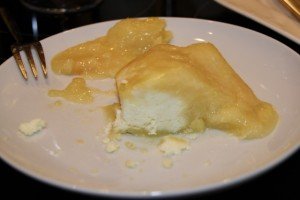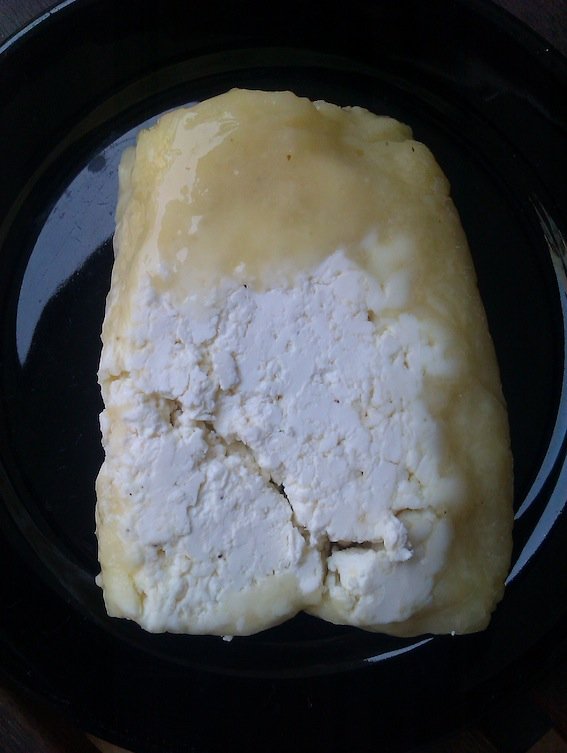This a monthly series which I have been publishing for years. You can subscribe here, to get the latest cheese delivered directly on to your screen.
Graukäse, grey cheese… doesn’t sound exactly sexy, does it? And on top of that unfortunate name, the poor chap habitually has to suffer disfiguration in the form of onion rings and vinegar. Folks, this is just unacceptable. Stop dissing Graukäse and dousing it with cheap acidity right now! Instead, start taking in its real taste. If you feel like totally blank now, surrounded by question marks – before you hit the escape button: this is about the northern Italian cousin of the German Handkäse-Harzer-Korbkäse family.

Foto Carolin Riffel
The version from Alto Adige is much larger though, is ideally made from excellent, raw milk and has much more to offer than most cheese aficionados think. Our first encounter was quite idyllic: surrounded by the snow covered peaks of the Dolomites, the sun bright and the sky the deepest mountain blue, with the air still spring fresh, but warm enough to sit out for lunch. The morning had been dedicated to the wines of one of the region’s best producers, and the lunch break was well deserved. The winemaker acted as host and ordered much needed food. The wooden table was soon covered with regional dishes: clear soup with speck dumplings and speck as such, the local ravioli and headcheese, Vintschgauer spiced bread rolls and the hard Schüttelbrot. And: Graukäse. Looking at the large slice, it must have come from an impressive wheel of at least five kilogram. Unevitably though the poor chap had been dressed with plenty of onion rings and vinegar – back then, in that very moment, I didn’t really mind, on the contrary, after all the wine it was quite delicious and refreshing.
But thinking about it more soberly and with my culinary historian hat on, the two loud shouters didn’t really speak of high respect for the cheese. Never mind the idyllic setting – you just don’t douse in vinegar the stuff you are proud of, do you? Well, obviously you’re not necessarily proud of all edibles you can wrestle from nature. The family of sour skimmed milk cheeses, to which Graukäse and the Harzer folks belong (as well as Norwegian Pultost) without any doubt are due to the leftovers from butter production, which leaves you with more than plenty of skimmed milk you can’t really call sweet anymore. It was left to go all sour and curdle, you drained it, mixed the curds with salt and pressed it into moulds, small wooden ones, small baskets or simply shaping with your hands in central Germany, or larger wooden ones in northern Italy. Up in the mountains they let their large cheeses mature on wooden shelves and just turned them regularly, but otherwise didn’t do anything, so that no rind formed, just a little mould. Those cheeses offered a lot of advantages compared with milk: you could take them to market or pack a wedge for lunch. Did the advantages extend to taste? That’s exactly that: a question of taste. My own culinary socialization included Harzer, I love the stuff. And as I mentioned earlier, the best Graukäse from the Ahrn valley can be left to ripen for a long time. It then becomes so creamy that it reminds me of very mature Brie and pairs beautifully with a bold, rich and equally mature (comparatively speaking) dry Silvaner, or a fruit-driven Pinot. Vinegar and onions? Absolutely de trop.
This a monthly series which I have been publishing for years. You can subscribe here, to get the latest cheese delivered directly on to your screen.
If you enjoyed reading this, you might consider clicking on the button below and supporting me in my work. I’d be more than happy. Thank you.

